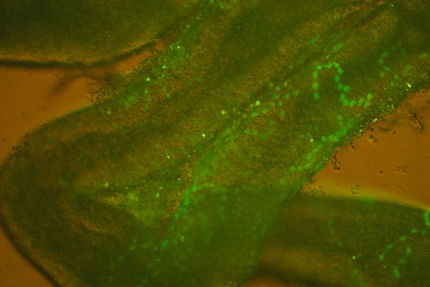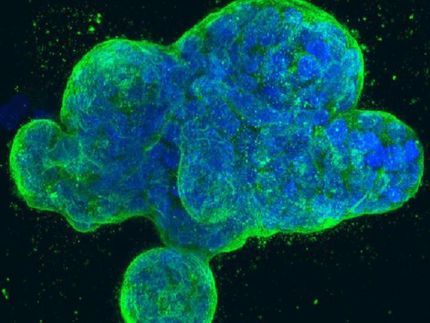More evidence that melanoma does not conform to the cancer stem cell model
Advertisement
University of Michigan researchers have determined that most types of melanoma cells can form malignant tumors, providing new evidence that the deadliest form of skin cancer does not conform to the increasingly popular cancer stem cell model.
In addition, the researchers found that melanoma tumor cells can change their appearance by switching various genes on and off, making the malignant cells a stealthy, shape-shifting target for researchers seeking new treatments, according to a team led by Sean Morrison, director of the U-M Center for Stem Cell Biology.
Both findings fly in the face of the cancer stem cell model, which states that a handful of rare melanoma stem cells drive the formation, growth and progression of malignant tumors in many cancers. Some supporters of the model have suggested that melanoma might be more effectively treated by taking aim specifically at these rare cancer stems cells, rather than attempting to eliminate all melanoma cells.
But after conducting an exhaustive search for this elusive sub-population of tumor-forming melanoma cell, the U-M team concluded that it probably does not exist. The researchers analyzed 44 sub-populations of human melanoma cells, and all 44 had a similar ability to form tumors when transplanted into mice.
"Some have suggested that melanoma follows a cancer stem cell model in which only rare cells are able to proliferate extensively and form new tumors," said Morrison, a Howard Hughes Medical Institute nvestigator.
"Our results suggest that most melanoma cells are capable of driving disease progression and that it won't be possible to cure patients by targeting rare sub-populations of cells," Morrison said. "We think you need to kill all the cells."
The team's findings are published in Cancer Cell. The first authors of the paper are Elsa Quintana of the U-M Center for Stem Cell Biology, based at the Life Sciences Institute, and Mark Shackleton, formerly with the Morrison lab and now at the Peter MacCallum Cancer Center in Melbourne, Australia.
The study found that tumor-forming melanoma cells have the ability to throw a genetic switch that changes the types of proteins expressed on the cells' surface. The study is the first to present evidence for this type of pervasive "phenotypic plasticity" among melanoma cells from patients.
Patterns of surface proteins are used to identify different cell types and are commonly called cell surface markers.
"The fact that these markers are turned on and off by melanoma cells raises the possibility that melanoma cells may also turn on and off genes that regulate clinically important characteristics like drug resistance and metastatic ability," Morrison said. "The ability to transition between various states may make melanoma more difficult to treat."
The authors stress that while their results argue against a cancer stem cell model for melanoma, their findings do not invalidate the model. In fact, certain leukemias and other cancers appear to follow the model.
"It will be critical to determine which cancers follow a stem cell model and which do not, so therapies designed to target rare sub-populations of cells are not inappropriately tested in patients whose disease is driven by many diverse cancer cells," Quintana said.
The cancer stem cell model assumes that cells differing in marker expression also differ in function, and that only a very small subset of cancer cells displaying the critical marker pattern---less than 1 percent of cancer cells---can form tumors. The model proposes that most of the cancer cells that compose tumors have little or no capacity to proliferate or to contribute to disease progression.
"The cancer stem cell model says that tumor cells are organized hierarchically, and that only the cells at the top of the hierarchy form tumors. Cells at the bottom of the hierarchy can't," Morrison said. However, the Morrison laboratory was unable to find any subset of melanoma cells that lacked the ability to form tumors.
"In our model, all these cells can form tumors," he said. "And they're phenotypically different from each other not because they're hierarchically organized but because they're just turning these surface markers on and off."
The U-M team found that all tumor-forming melanoma cells gave rise to progeny with a variety of marker patterns, and that all of those sub-populations retained the ability to form tumors. The marker changes appeared to be reversible, rather than being associated with a transition from tumor-forming to non-tumor-forming states, as the cancer stem cell model would predict.
























































